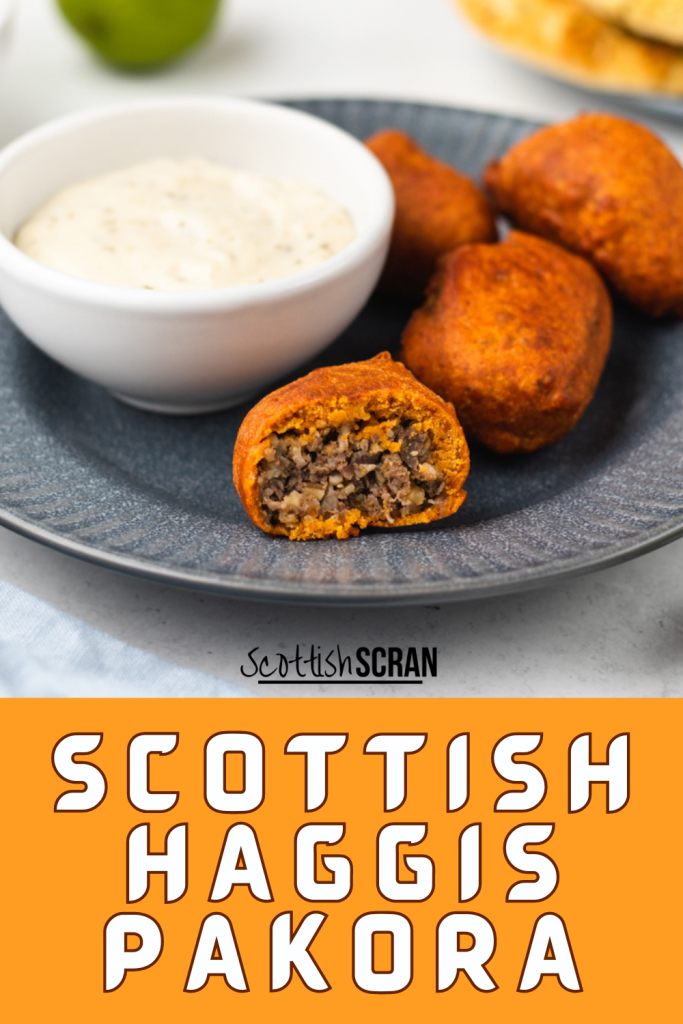Haggis Pakora is a perfect fusion: the tradition of haggis combined with the more exotic flavours and equally rich history of Pakora.
This sublime combination is undervalued and relatively unknown outside of Scotland. We just had to give it a try to see if we could recreate this tasty street food!
Chicken and vegetable pakora is commonplace, but Haggis Pakora is becoming a modern classic. It can be found in many a chippie, supermarket and Indian restaurant here in Scotland and has a real place in Scotland’s hearts.
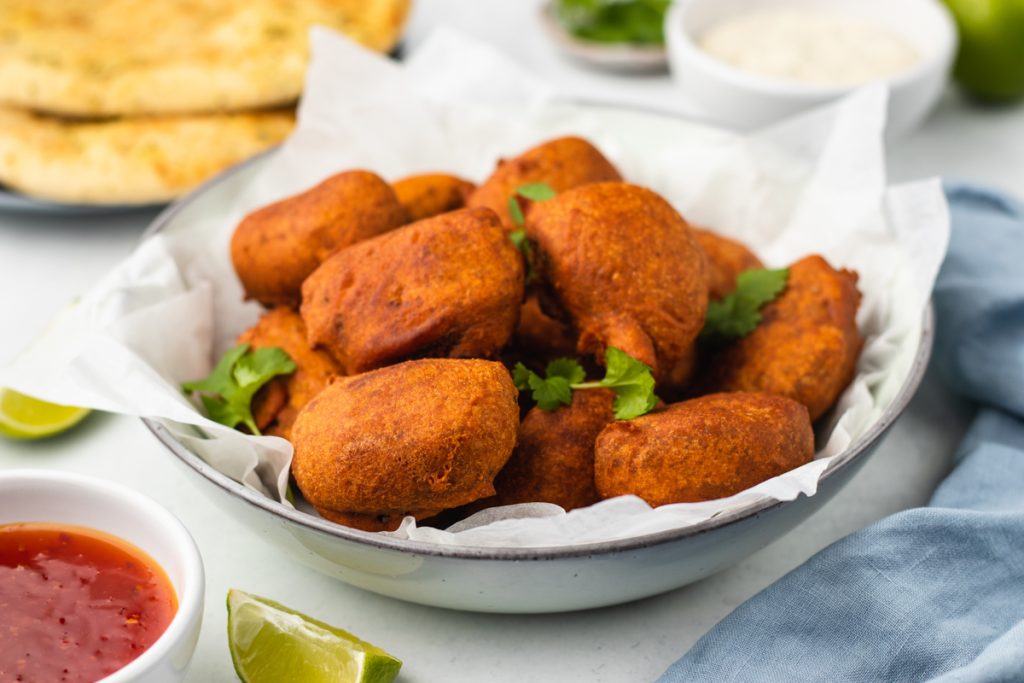
What is Haggis?
As a visitor to a website such as ours, there is a fair chance that you already know what haggis is, let alone haggis pakora. But for those who don’t, welcome!
Haggis is a traditional Scottish dish made from lamb, beef, oats, and some delightful spices. The meat elements are offal, the edible internal organs of each animal.
Traditionally, the mixture would be wrapped in a sheep’s stomach, though this isn’t always the case now as a manufactured casing has been developed.
It is not the most attractive-sounding food when laid out like this, but do taste it before you judge it. It is wonderfully rich and peppery, with a delicious, unique taste loved by so many and perfect for haggis pakora.
Haggis is a simple food that has been made for thousands of years, and surprisingly, for some, it can be traced to numerous countries where using every part of any animal was essential.
Apart from its budget-friendly ingredients, haggis’ popularity in Scotland can be attributed to a certain Robert Burns, Scotland’s national poet and a lover of haggis.
Not only did he write the famous ‘Address to a Haggis’, but after his death, he had a supper named after him to celebrate his life and work. This global event meant the simple haggis became a worldwide food, forever linked to Scotland.
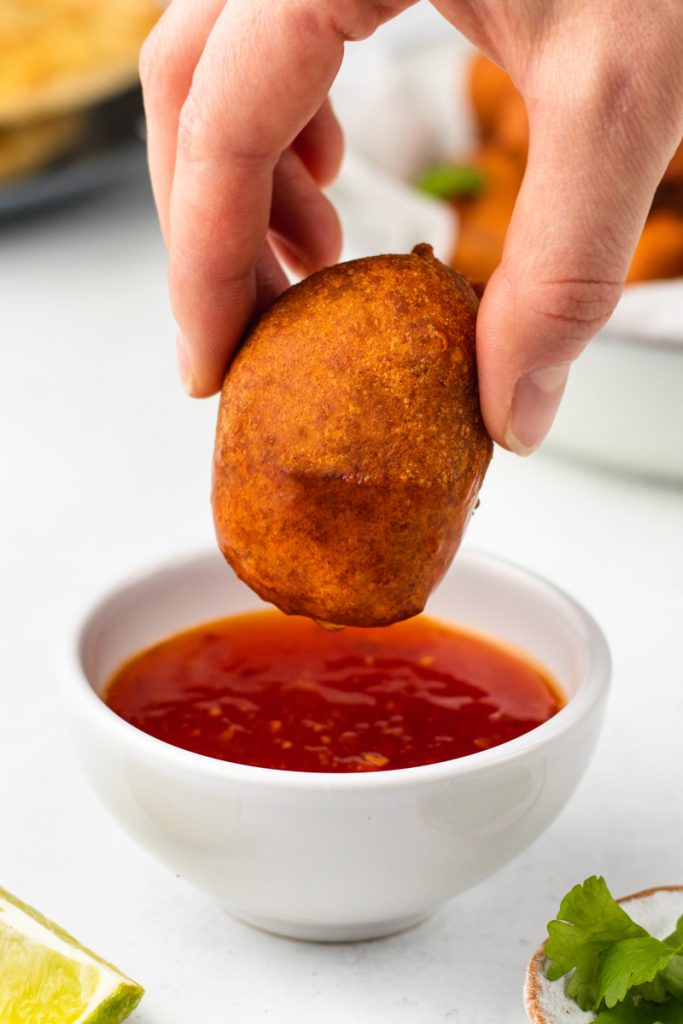
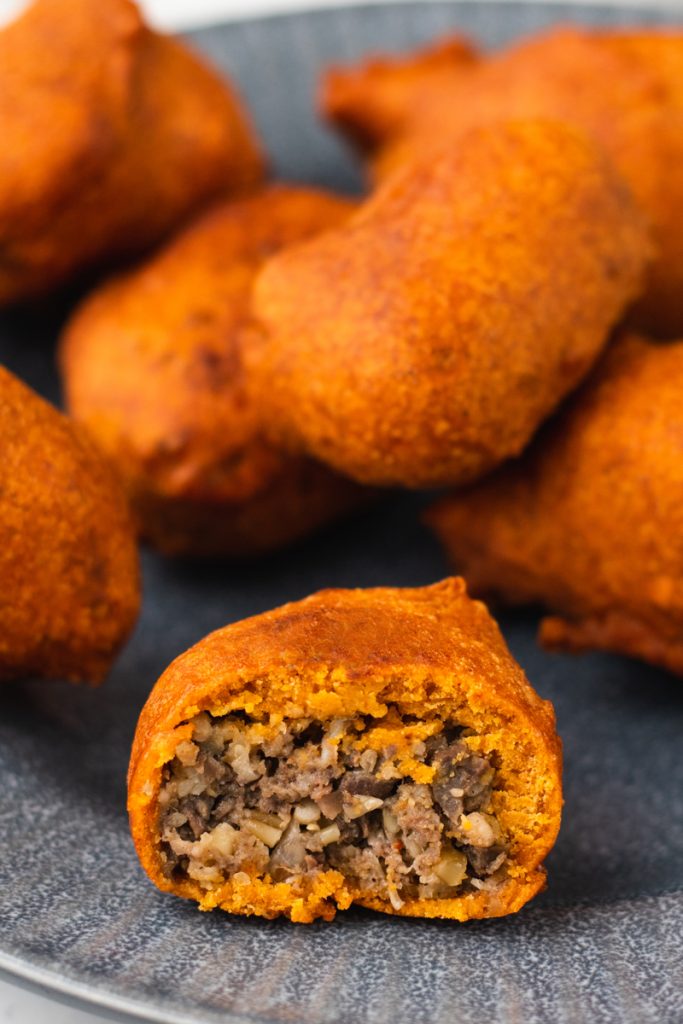
What is Pakora?
Pakora of any sort is a crispy fritter with as much tradition and history as haggis. My basic understanding leads me to believe that a variation of Pakora was first created in the era of the Mughal Empire.
The Empire covered much of South Asia from the early 1500s to the mid-1700s, giving the world much more than Pakora, the Taj Mahal being one among many other wonders.
The modern version of the Pakora that we know and love today is sold in restaurants and by street vendors worldwide and has a rich history that embeds it firmly in Indian cuisine.
The filling is often vegetables or chicken coated or mixed in with a batter seasoned with gram flour and a combination of spices that varies from recipe to recipe. Not unlike haggis, everyone who makes it has their own cherished way to make the taste their own.
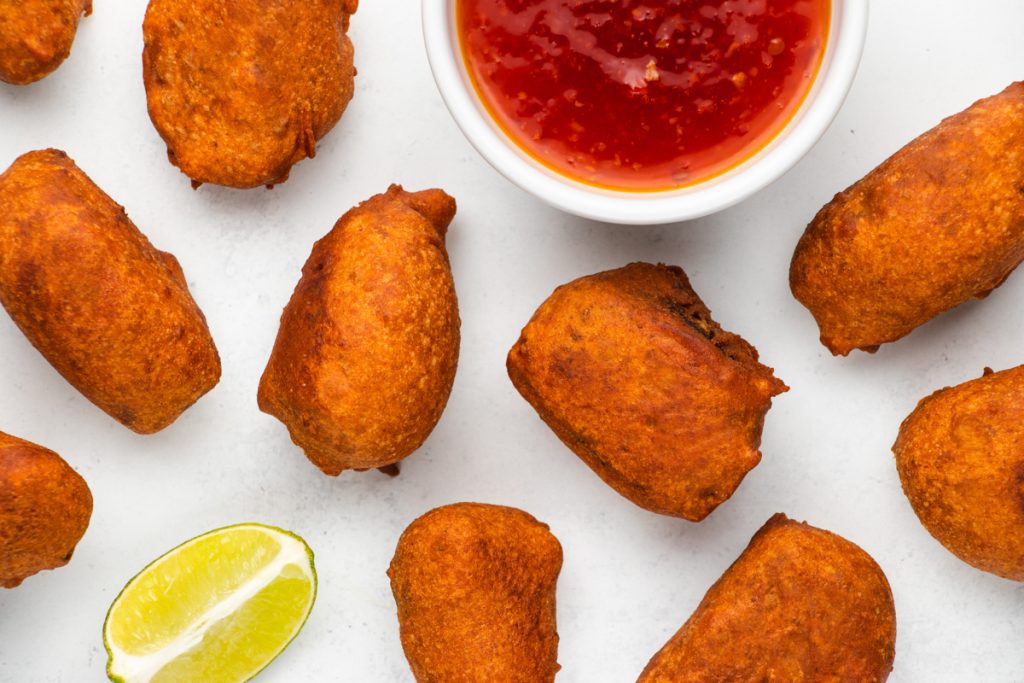
What is Haggis Pakora?
For those who don’t know, Haggis Pakora is small balls of haggis either covered in or mixed with spiced batter and then fried. The spices are influenced by the more traditional chicken or vegetable pakora flavours.
The idea of Scottish people finding a way to deep fry haggis should not come as a shock, but neither should the acceptance of other cuisines to mix with and welcome as one of their own. Love it!
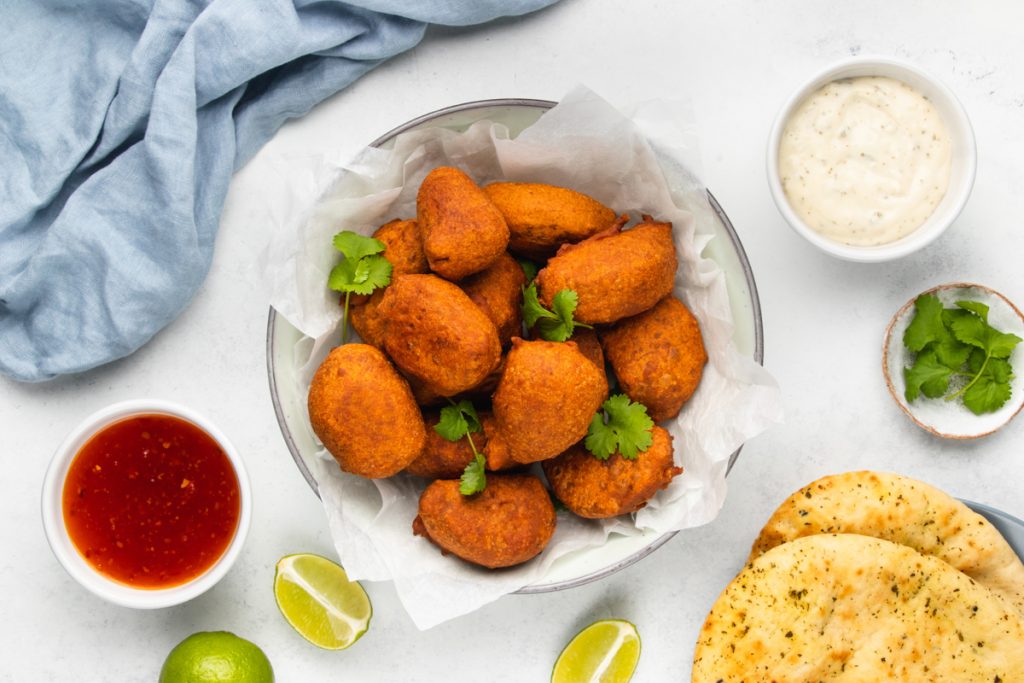
Where does Haggis Pakora come from?
However, Haggis pakoras are not an old creation, depending on your definition of old. As a 40-something, things made in the 90s are not old; they’re just yesterday!
Anyway, Haggis Pakora seems to have been created by members of the Sikh community who attended that year’s Scottish Mela in the early 90s. The community members, alongside chef Bill McMeekin, experimented with traditional pakora batters and ingredients and combined them with the pride of Scotland—haggis.
Why is Haggis Pakora so popular in Scotland?
The fusion of Haggis Pakora spread across Scotland after its introduction in the 90’s. It was soon being served in Indian restaurants across Scotland, appealing to the country’s love of fried food, haggis and Indian dishes!
It has even been made into a ready meal that can be eaten at home and has become a regular on chippie menus. There are even celebrity chefs serving it in pop-ups.
From a small experiment to a national treasure in 30-odd years! This is why we love Scottish food and generally live in Scotland.
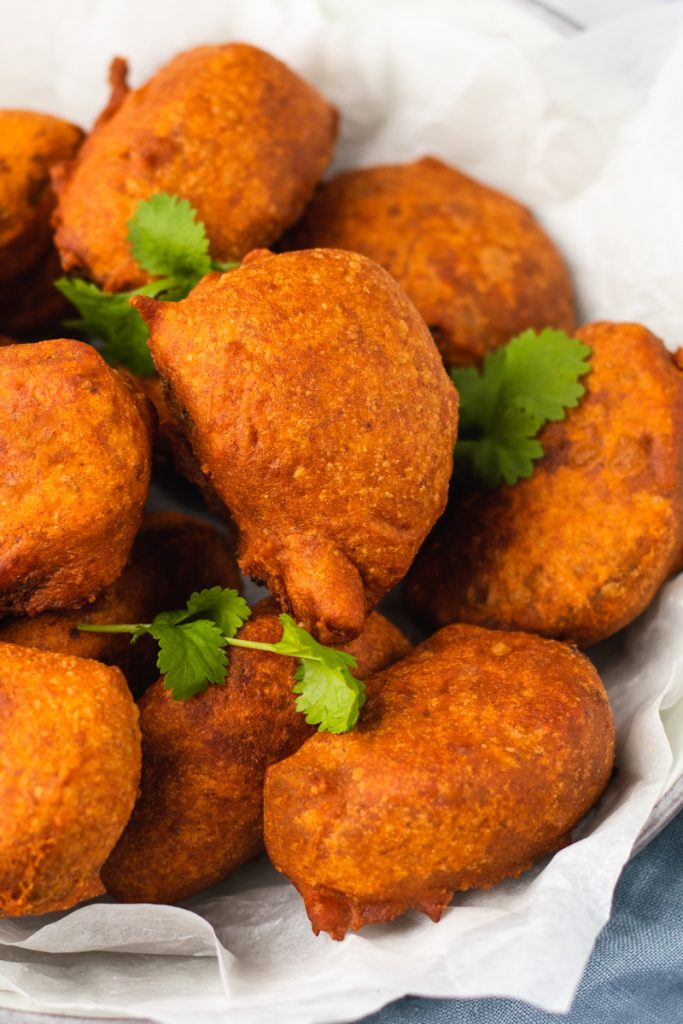
Things you’ll need to make Haggis Pakora
- Knife
- Large mixing bowl
- Whisk
- Jug
- Wooden spoon
- Chopping board/tray
- Parchment paper
- Deep frying pan
- Slotted spoon
Ingredients for a Haggis Pakora
- 400g/14oz haggis
- 150g gram flour (1 cup + 3 tbsp)
- 50g rice flour (1/3 cup + 1 tbsp)
- 2 tsp chilli powder
- ½ tsp garam masala
- ½ tsp cumin
- ¼ tsp garlic powder
- ¼ turmeric
- ¼ tsp asafoetida (optional)
- 1 ½ tsp salt
- 165-185ml water (2/3-3/4 cup)
- Vegetable oil for frying
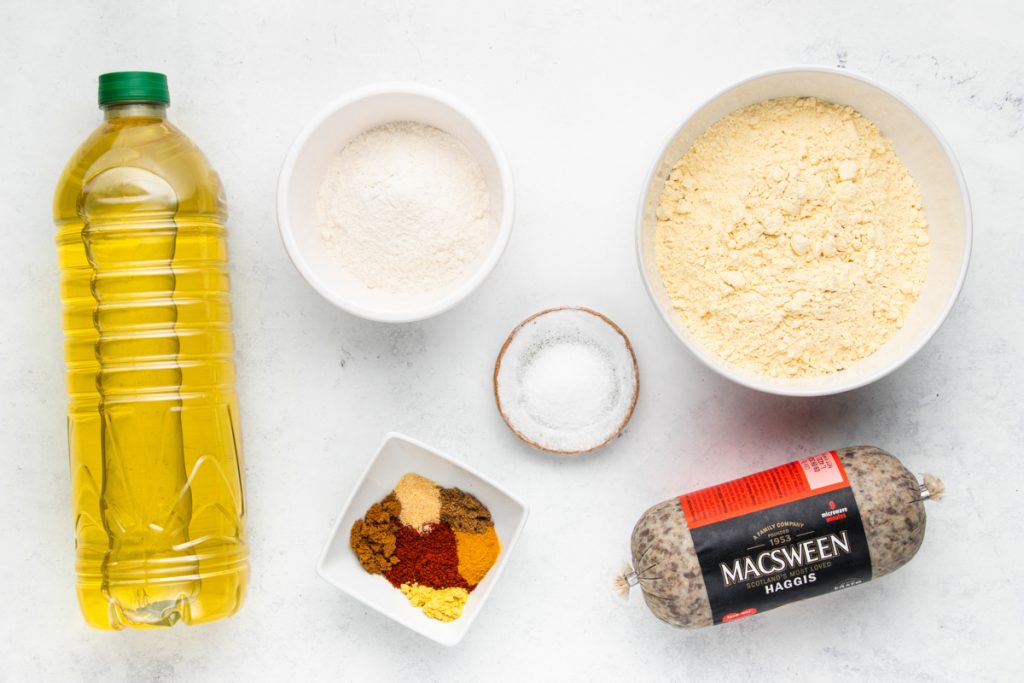
How to make Haggis Pakora – Step-by-step method
Slice the haggis into approximately 14 pieces. You can mould these into rounds if you so desire.
Add the flours, spices, and salt to a mixing bowl and whisk to combine.
Gradually add the water, stirring as you go, until you have a thick, smooth batter.
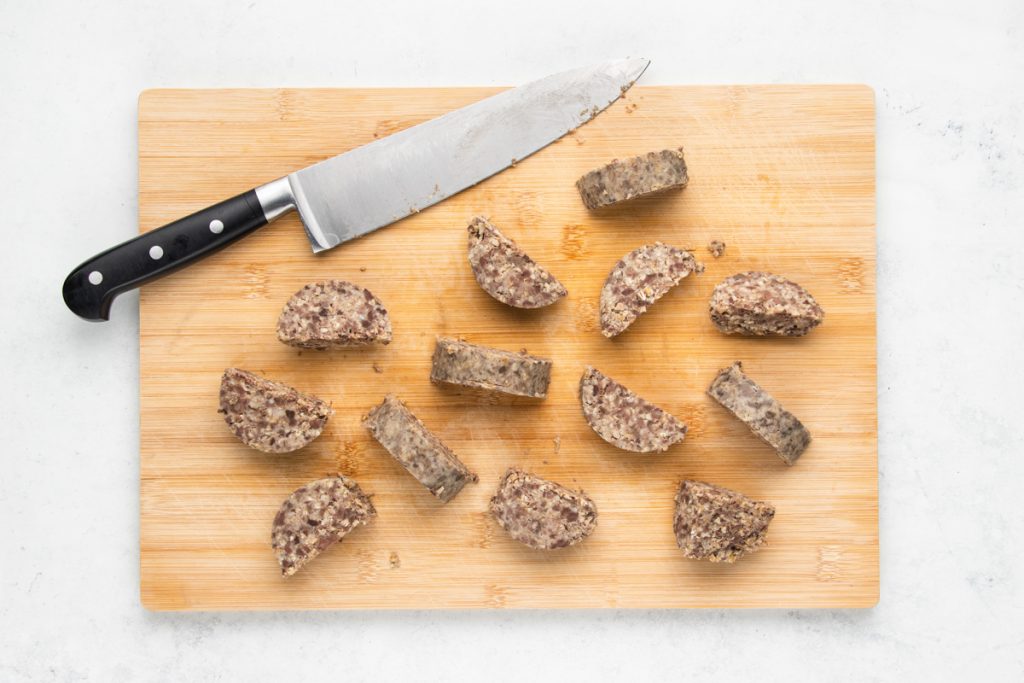
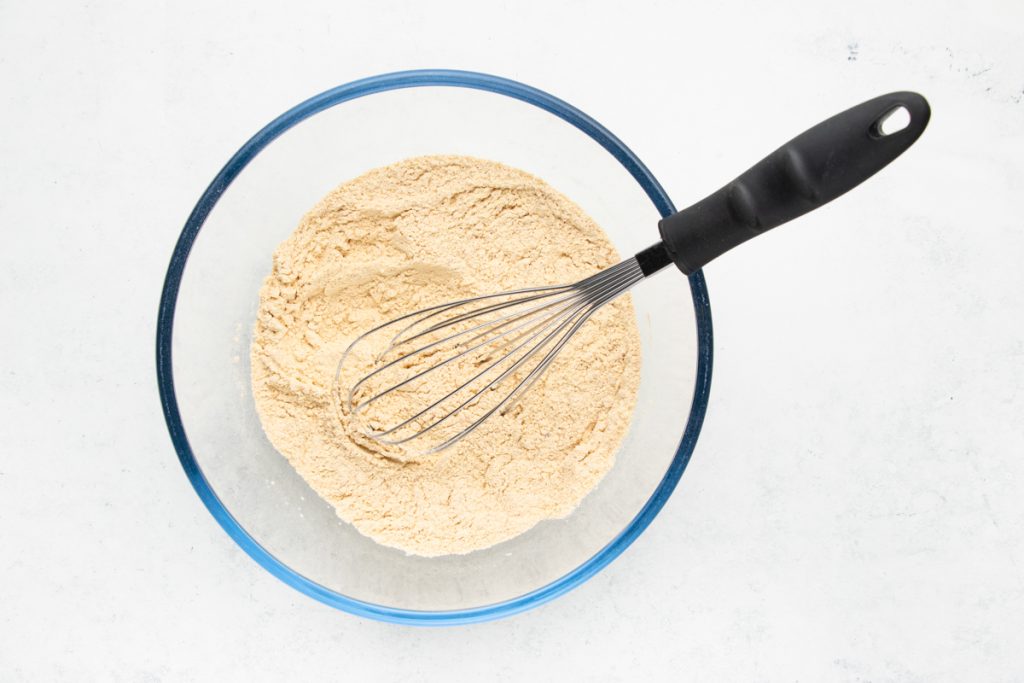
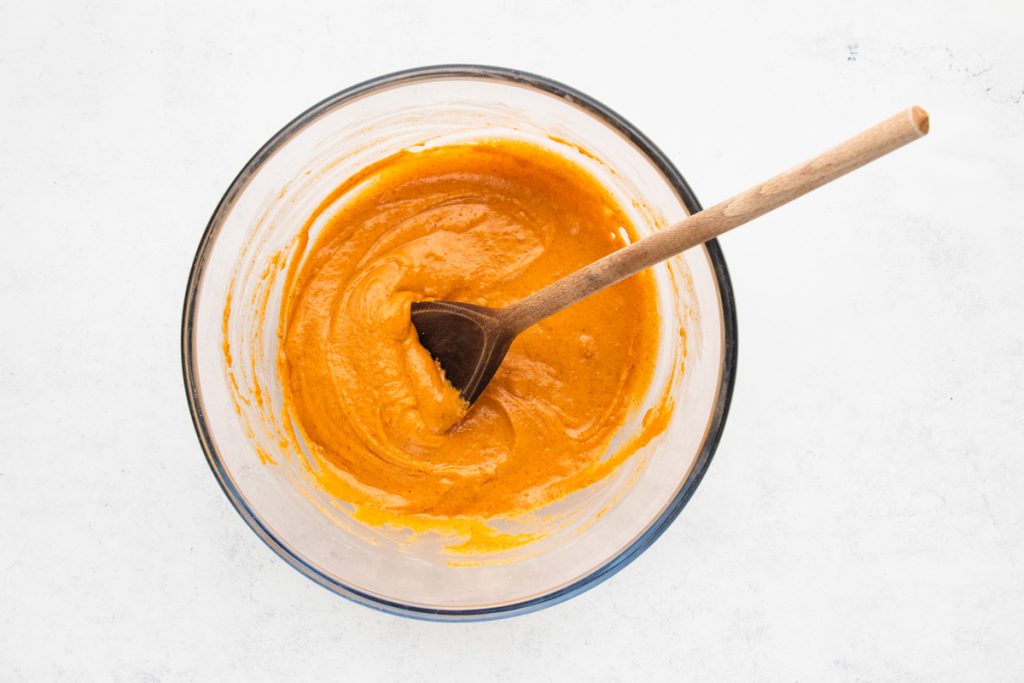
Dip each haggis piece into the batter to coat it fully. Place the coated pieces onto a chopping board or tray lined with parchment paper, ready for frying.
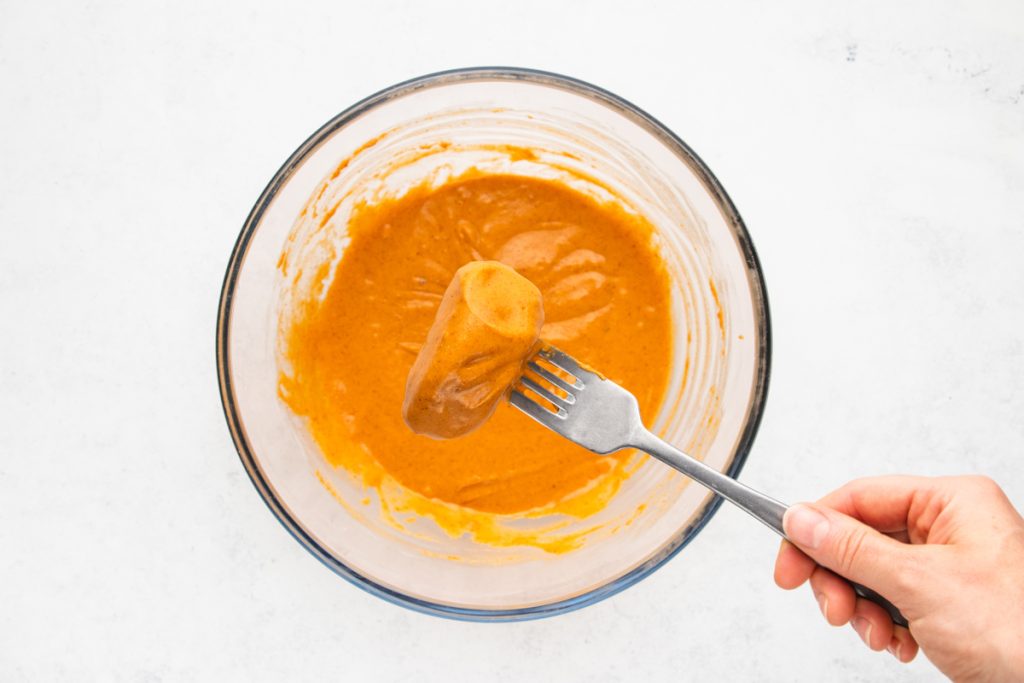

Fill a deep frying pan or pot with enough vegetable oil to fully submerge the pakoras. Heat on a high setting, using a meat thermometer to monitor the temperature. The oil is ready for frying when it reaches 190C/374F.
Carefully drop the coated haggis pieces into the hot oil and fry for 2 minutes. It may be easier to work in two or three batches.
Remove the haggis pakoras from the oil with a slotted spoon and drain them on a plate lined with kitchen paper.
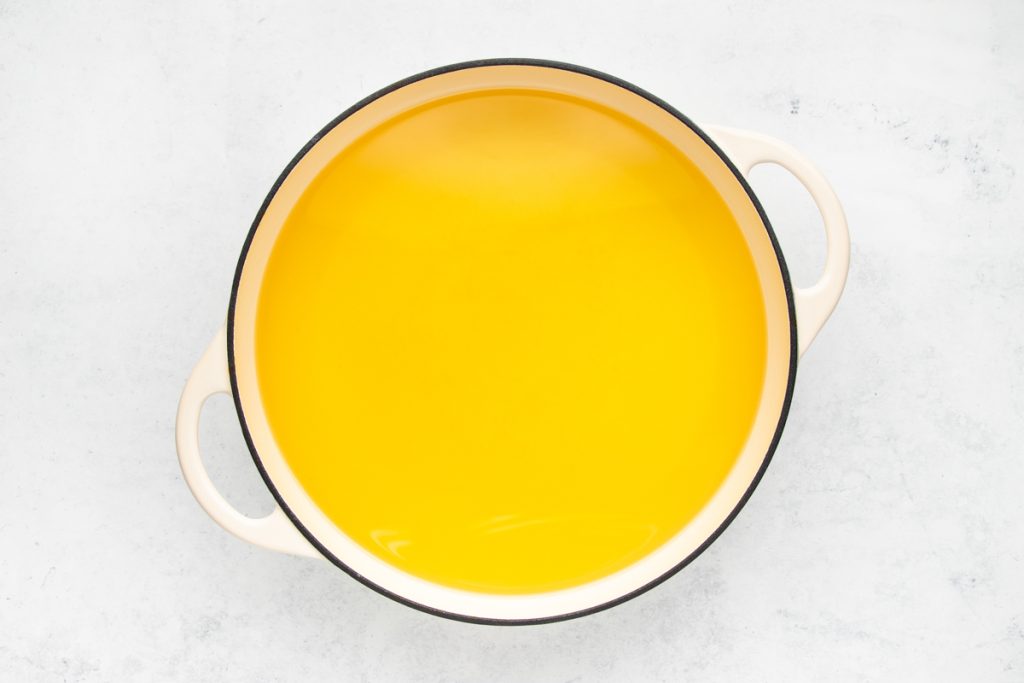
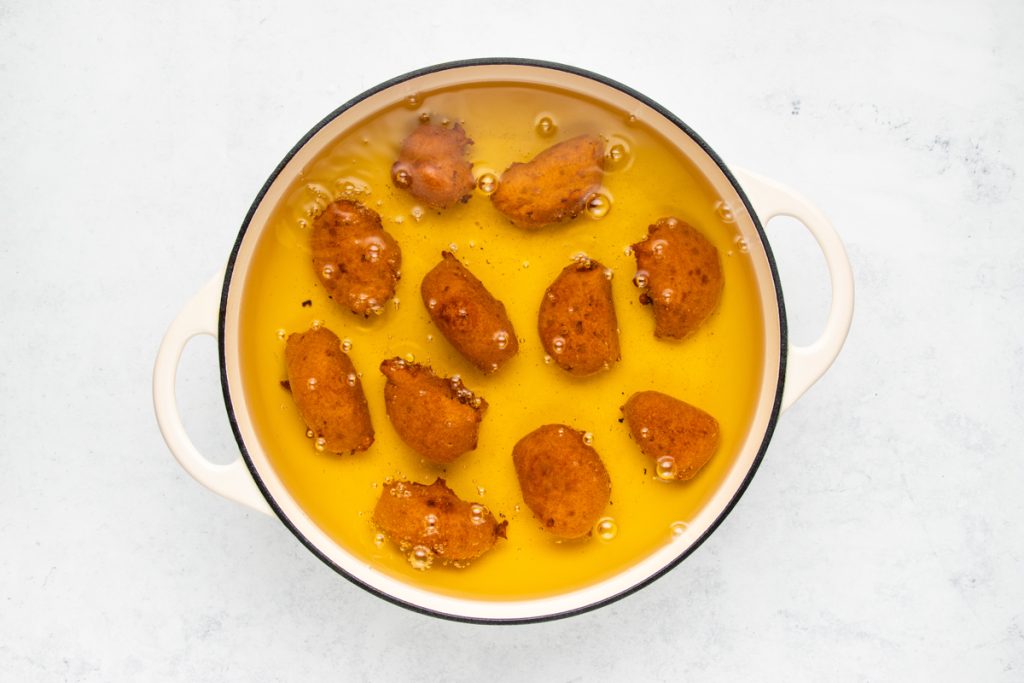
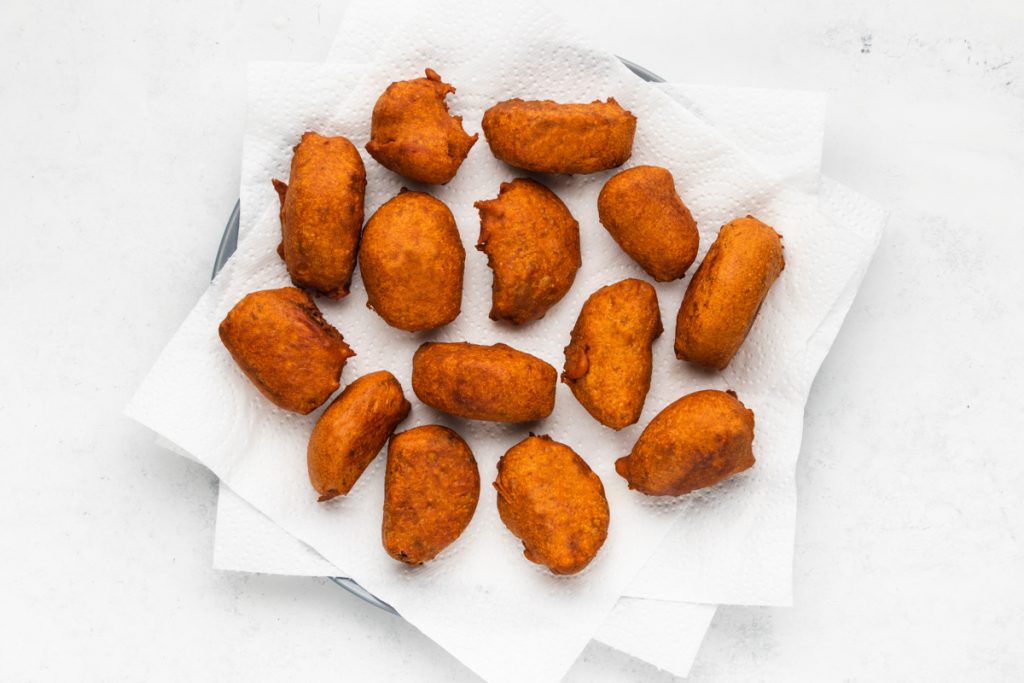
Serve haggis pakora with your favourite dips and sides, such as sweet chilli sauce, raita, fresh coriander, lime wedges, and naan bread.
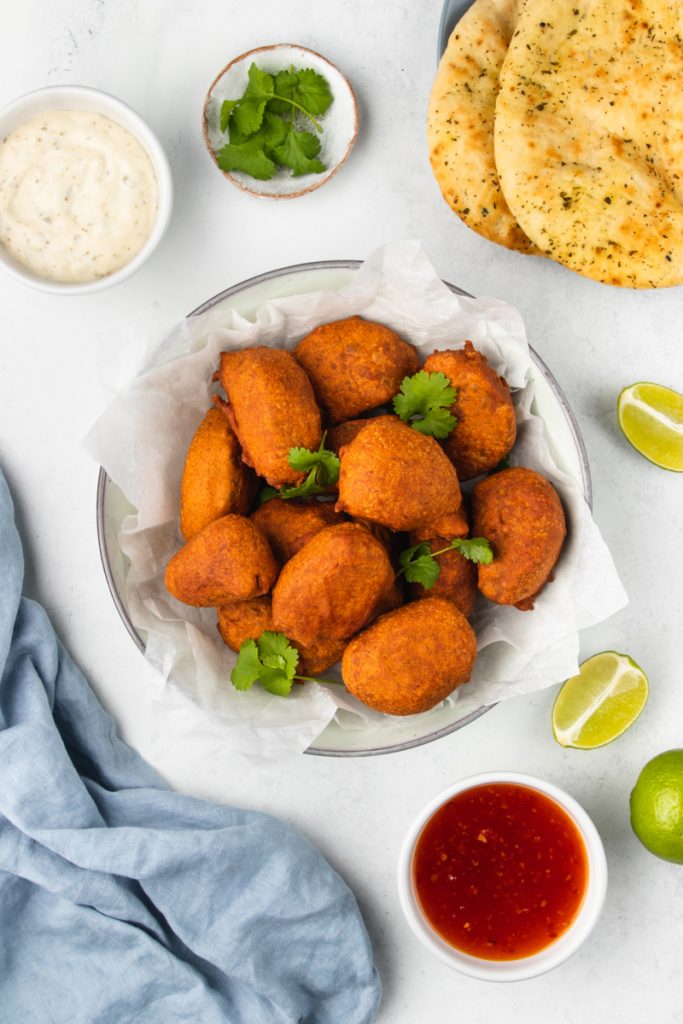
Easy Haggis Pakora Recipe
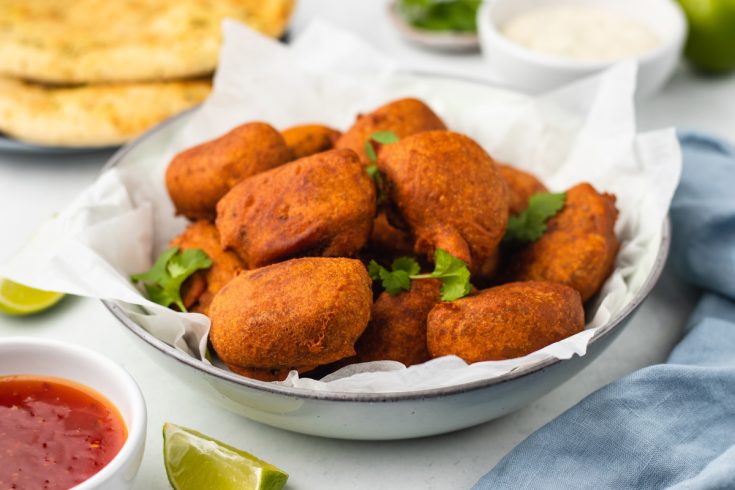
Haggis Pakora is the perfect fusion of Scottish and Indian cuisines. The earthy, peppery taste of Haggis, surrounded by the crispy spiced batter, provides a crunch and flavour that makes these two key ingredients work perfectly together.
Ingredients
- 400g/14oz haggis
- 150g gram flour (1 cup + 3 tbsp)
- 50g rice flour (1/3 cup + 1 tbsp)
- 2 tsp chilli powder
- ½ tsp garam masala
- ½ tsp cumin
- ¼ tsp garlic powder
- ¼ turmeric
- ¼ tsp asafoetida (optional)
- 1 ½ tsp salt
- 165-185ml water (2/3-3/4 cup)
- Vegetable oil, for frying
Instructions
- Slice the haggis into approximately 14 pieces.
- Add the flours, spices, and salt to a mixing bowl and whisk to combine.
- Gradually add the water, stirring as you go, until you have a thick, smooth batter.
- Dip each haggis piece into the batter to full coat it. Place the coated pieces onto a chopping board or tray lined with parchment paper ready for frying.
- Fill a deep frying pan or pot with enough vegetable oil to fully submerge the pakoras. Heat on a high setting, using a meat thermometer to monitor the temperature. The oil is ready for frying when it reaches 190C/374F.
- Carefully drop the coated haggis pieces into the hot oil and fry for 2 minutes. You may find it easier to work in two or three batches.
- Use a slotted spoon to remove the pakoras from the oil and drain them on a plate lined with kitchen paper.
- Serve with your favourite dips and sides, such as sweet chilli sauce, raita, fresh coriander, lime wedges, and naan bread.
FAQS
What is the best sauce for Haggis Pakora?
We like a lot of spice, so hot sauce is the way forward for us. We use Frank’s Wings Hot Sauce, but many like it hotter. Some prefer sweet chilli, and some even avoid spice like the plague!
For these people, we’d suggest a yoghurt-based sauce such as raita, an Indian sauce not unlike tzatziki.
A combination of both hot sauces and those that cool the palette make an excellent combination for serving.
What is Asafoetida?
Asafoetida is an interesting little extract that brings all the other spices in the pan to life. Not everyone will have it on hand or be able to easily buy it, but it is well worth the investment!
We have included it, and it does provide a particular extra taste to the Pakora, a boost in flavour that is hard to describe. However, without it, the Pakora are still delicious, so don’t put off making them because finding Asafoetida can be a little tricky.
Can you use vegetarian haggis for Haggis Pakora?
You certainly can. Although we do make a delicious Veggie Haggis, ours may not hold its shape when covered in the batter. If this is the case, we would suggest Macsween Vegetarian Haggis, a tried and tested brand that we eat regularly.
Does this haggis pakora recipe work with other fillings?
Obviously, we’re big fans of Haggis Pakora, but there are other popular fillings and the batter we’ve made works well with both vegetables and chicken. You just have to ensure your filling of choice is cooked through but equally not too dried out. Vegetable Pakora can be large pieces of veg, like cauliflower, potato, or mixed veg, full of spice.
You will have to look a little further afield for a recipe for this; we have yet to try it.
Not unlike haggis, the perfect size for chicken pakora is very much up to you. We prefer a larger piece of chicken, the size of a third of a chicken breast, for example, though some prefer a nugget-size piece of chicken. Either way, make sure it is cooked through thoroughly without drying out and crisping too much.
For more easy haggis recipes that don’t have a neep or a tattie in sight, try these:
- Haggis and Cheese Turnovers Recipe
- Easy Haggis Sausage Rolls Recipe
- Haggis and Cheese Scones
- Delicious Creamy Haggis Pasta Recipe
- Super Easy Haggis Burger Recipe
- Easy & Tasty Haggis Bon Bons Recipe
- Recipes for Haggis: 33 Ideas for Using Haggis
Pin for later!
